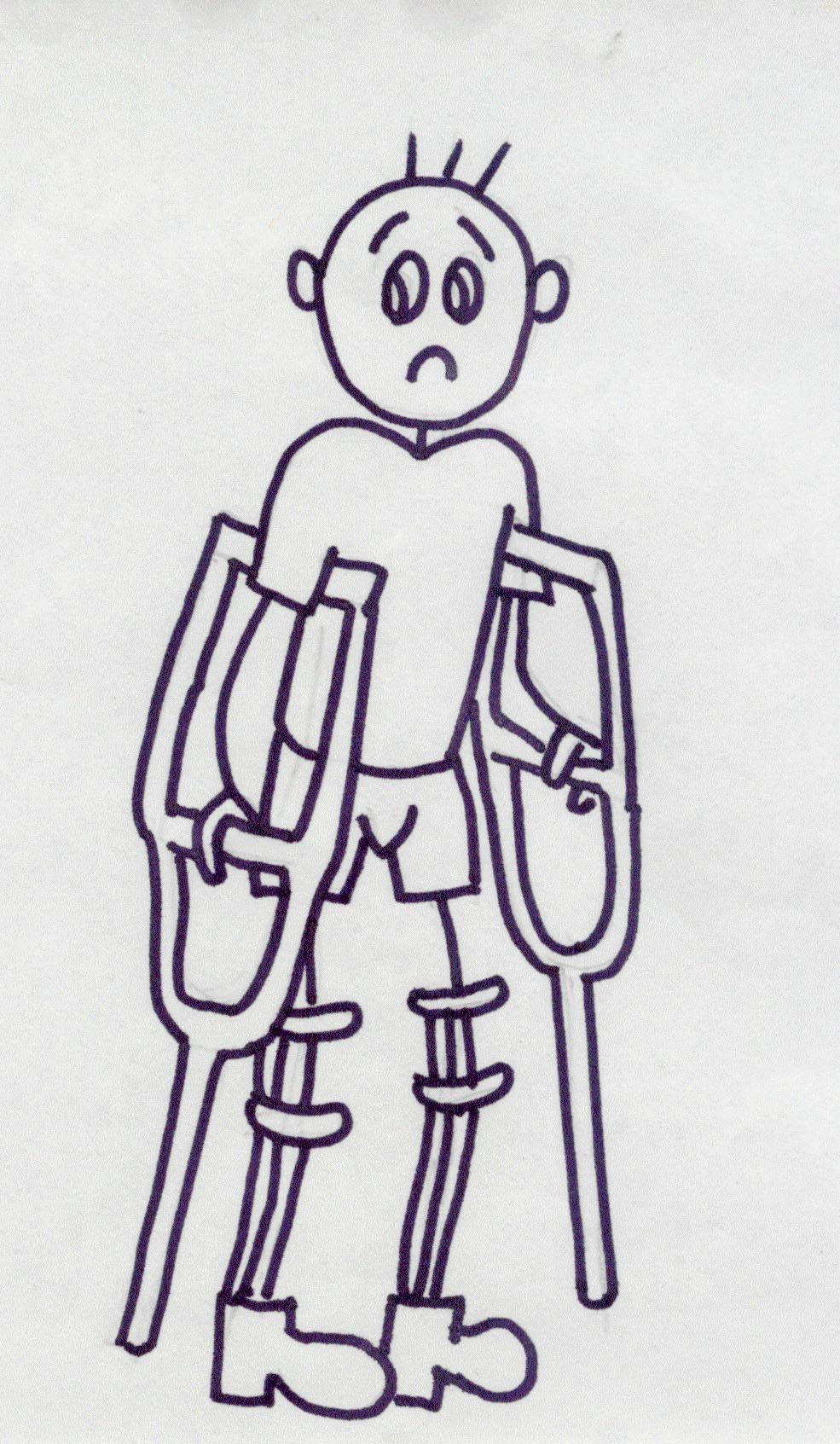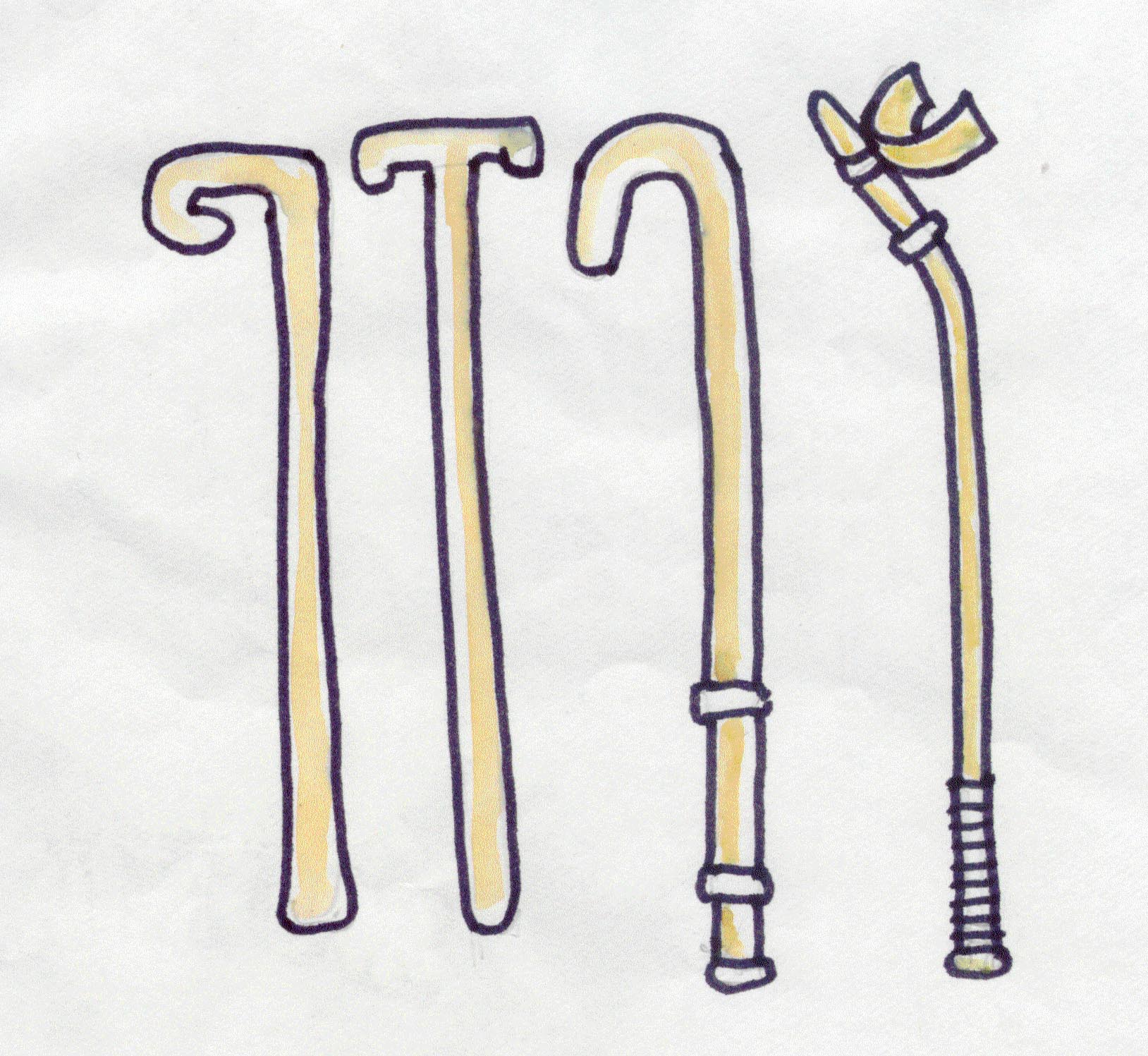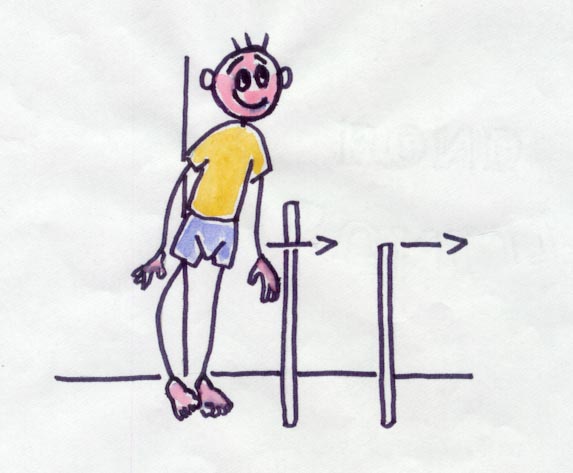
1.Walker |

2. Wheel Chair |

1.Walker |

2. Wheel Chair |

3. Trolley |

4. Stick |

5. Crutches |
A stick should be
solid and strong, with a diameter
of about 2 cms.
It should be straight.
It should not be
very heavy.
It should be of proper
length.
The stick may look
like any of the ones shown below.
 |
| Make the person stand with a support and arms straight down. | He could support himself against a wall/a tree. |
| Keep a long stick by his side | The stick should touch the arm. |
| Mark a point half way between his elbow and the tip of the fist. | Make a mark at this point. The required length is upto this point. |

| Make the patient stand with a stick. | Keep
the stick on the
side opposite the weaker leg. |
| Place the stick a little in front and a little away. | Ask the patient to stand straight. |
| Ask
the patient to move the stick and the weak leg together.
|
Let him take
one step. The
stick and the weak leg
are at one level.
The weight must be borne by the strong leg. |
| Let the patient now take a step with the strong leg. | Now the strong leg will be one step ahead. Put weight on the stick for balance and support. |
First move the stick, then the weak and then the strong leg. While moving the strong leg the patient must remember to put weight on the stick.
|
|
| Make patient stand with crutches by holding the hand-pieces and placing the top of the crutches below the arm pits. | The top pads of the crutches must press against the side of the chest, not the armpit. |
| The tips of the crutches must be placed a little away, to the side, and a little ahead of the toes. | Ask the patient to keep his body straight and well balanced. |
| The patient should move the left crutch and the right leg together, then the right crutch and left leg. | By doing so, balance and position are maintained to the optimum. |
Talking of mechanical devices, one is reminded of Orthosis. What does this term mean?
Orthosis is a mechanical device fitted to any part of the body such that, that part becomes functional to the maximum possible extent.
Exercise is essential for any child with locomotor disability whether caused by congenital deformity , polio, paralysis, cerebral palsy,stroke or amputation. Click HERE to view details of the exercises.